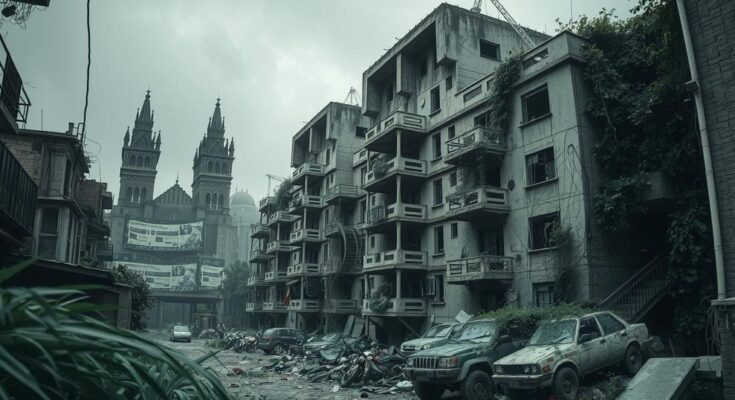Haiti is experiencing severe unrest as gangs usurp control over the capital, resulting in widespread violence and over one million displaced citizens. Civilians endure horrific circumstances, and government responses appear insufficient. The dire situation necessitates critical examination and updates regarding the ongoing crisis.
Haiti is engulfed in turmoil as violent gangs tighten their control over the capital city. In Delmas 30, armed assailants have set ablaze residences, indiscriminately shot at civilians, and driven families into a state of panic. Many parents are now seen navigating the perilous streets with their children, avoiding gunfire and flames. Law enforcement forces arrive too late, finding themselves in gunfights as chaos ensues across the city.
Survivors share harrowing accounts of the violence, recounting tragically that some loved ones were burned alive and that bodies were left discarded in wheelbarrows. Presently, over one million Haitians have been displaced, ensnared in an environment dominated by terror and lawlessness. As the government appears overwhelmed and criminal gangs proliferate, the prospects for peace and stability continue to diminish.
Observing the current situation, one may wonder how Haiti reached such a critical juncture. The complexities of gang violence, governance challenges, and socioeconomic struggles have converged to create this dire scenario. Ongoing developments merit close attention as Haiti’s crisis unfolds further, leaving many citizens yearning for relief and safety.
In summary, the situation in Haiti exemplifies a profound humanitarian crisis as armed gangs exert their influence over the capital, leading to widespread violence and displacement. With over one million individuals forced to flee their homes, the need for urgent intervention is critical. Understanding the roots of this chaos is essential for fostering hope and facilitating potential solutions for the beleaguered population.
Original Source: www.firstpost.com




